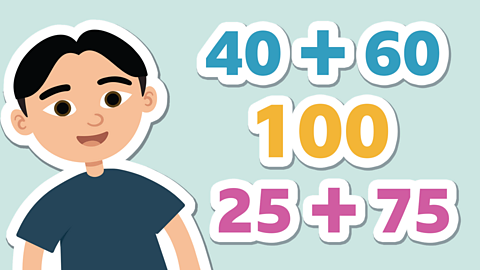What is column addition?
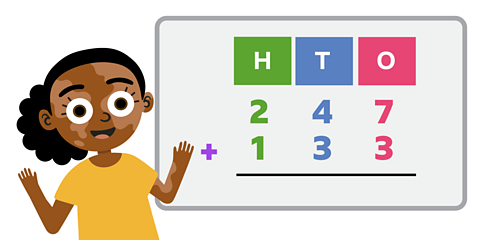
Adding larger numbers in your head is not always easy.
If you need to use pen and paper, then the column method is a good way to add.
It involves writing one number beneath the other, so that the digits line up for each place value.
You then add the digits, starting from the ones column on the right-hand side.

Quiz: Adding up to 4-digit numbers together
Complete this quiz to understand how to add up to 4-digit numbers together. Then put your knowledge to the test.
Using column addition
Let's look at a question.
What is 152 add 816?
This is quite difficult to work out in your head, so let's use column addition.

Image caption, Start from the ones column. Add the ones: 2 + 6 = 8
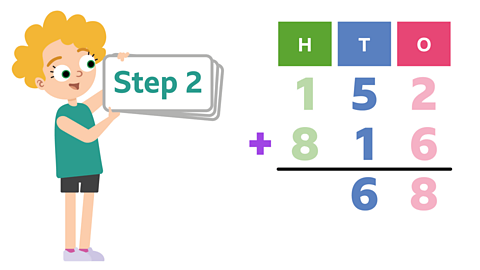
Image caption, Now, add the tens: 50 + 10 = 60
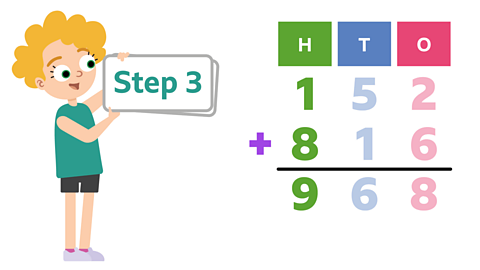
Image caption, Finally, add the hundreds: 100 + 800 = 900
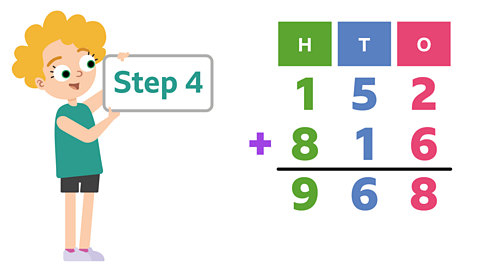
Image caption, Check the finished addition. 152 + 816 = 968
1 of 4
Column addition with regrouping
If the two numbers in a place value column add up to ten or more, you must regroup.
This means breaking a number up into tens and ones, or hundreds and tens to help with the addition.
Let's look at another question.
What is 343 + 329?

Image caption, Start from the ones column: 3 + 9 = 12. This needs regrouping, so 12 can be regrouped to 10 + 2. Write a 2 in the ones column and write a 10 in the tens column as a 1 below the column.
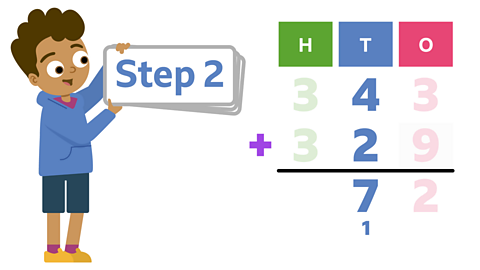
Image caption, In the tens column: 40 + 20 + 10 = 70. Remember to add that extra ten.
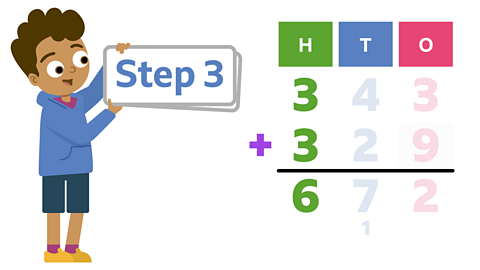
Image caption, In the hundreds column: 300 + 300 = 600.
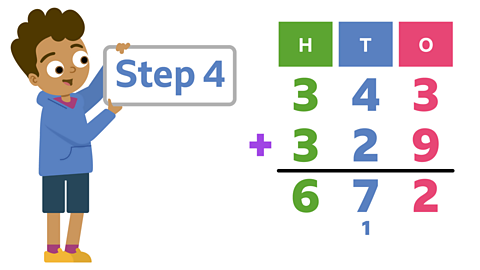
Image caption, Check the finished addition. 343 + 329 = 672
1 of 4
Adding 4-digit numbers
If you can add two 3-digit numbers, then you can use the same method to add 4-digit numbers together.
Just remember to add on the number that you have regrouped.
What is 4214 + 3936?
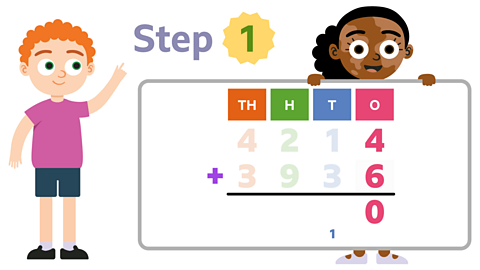
Image caption, As always, start by adding the ones column. 4 + 6 = 10. This needs regrouping, so put a 0 in the ones column and write a 10 in the tens column as a 1 below the column.

Image caption, Add up all the digits in the tens column. Don’t forget about the regrouped 10.
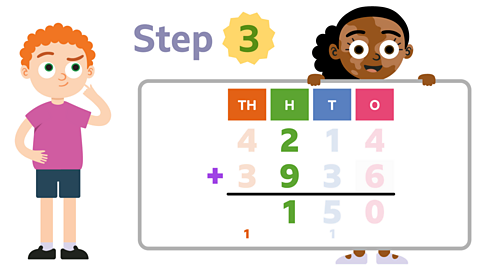
Image caption, Move on to the hundreds column. 200 + 900 = 1100. Regroup this so 1100 is 1000 + 100. Put the 1 in the hundreds column and write a 1000 in the thousands column as a 1 below the column.
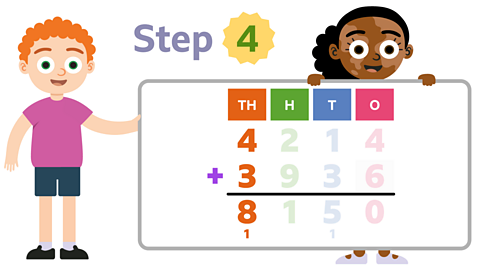
Image caption, Add up all the thousands: 4000 + 3000 + 1000 = 8000.
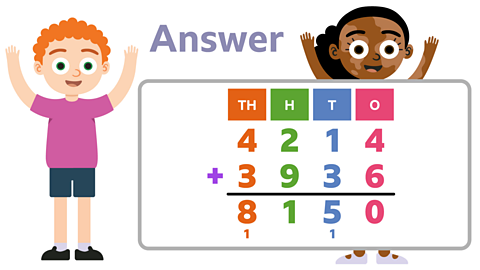
Image caption, Check the answer. 4214 + 3936 = 8150.
1 of 5

Remember
Here are a few reminders for adding larger numbers together.
When writing numbers for an addition, check the place value of each digit, so you see the value of the ones, tens, hundreds and thousands.
Write the numbers in a column and always start adding the ones first.
Estimate first and check afterwards - it's a good idea to estimate a rough answer and then check your actual answer.
Order doesn't matter - for example, 345 + 129 is the same as 129 + 345.
Look out for these key words in problems: 'total', 'sum', 'altogether', 'more'. They all indicate an addition calculation.
Regrouping is important – remember that if the column sum is equal to ten or more, you must regroup.

Example 1
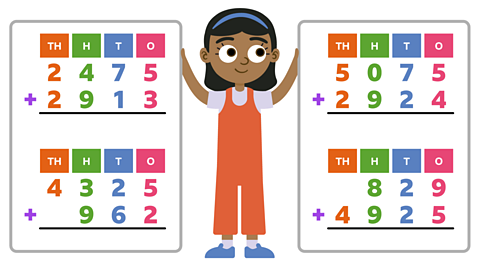
Which of these need regrouping?
Can you answer this without having to solve the calculations?
✓ The second and fourth calculation need regrouping.
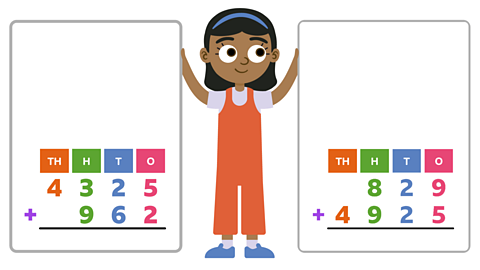
Example 2
You can use column addition to find the sum of three numbers as well.
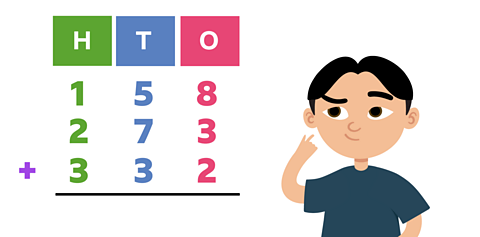
What is the total of 158, 273 and 332?
Look carefully at the numbers in each column. Look for numbers that are easy to add together, for example those that total 10.
✓ The answer 763. The process is the same as adding two numbers.
Step 1 - Add the ones:
8 + 3 + 2 = 13
Step 2 - Add the tens:
50 + 70 + 30 + 10 = 160
Step 3 - Add the hundreds:
100 + 200 + 300 = 700
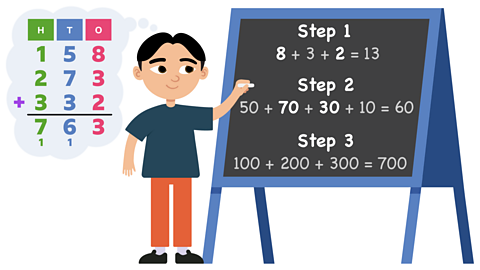
Play Guardians: Defenders of Mathematica to get ready for SATs. gamePlay Guardians: Defenders of Mathematica to get ready for SATs.
In this game, use the times tables and more maths skills to defeat monsters and reclaim the Kingdom.

More on Adding and subtracting
Find out more by working through a topic
- count10 of 12
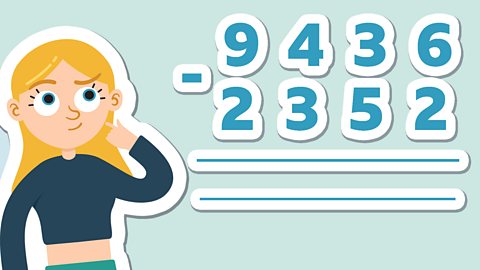
- count11 of 12
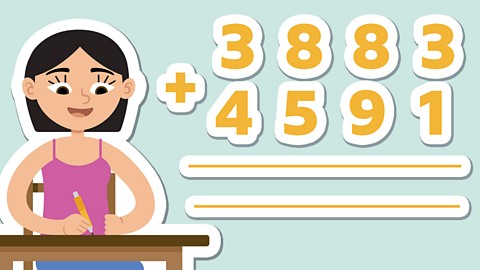
- count12 of 12
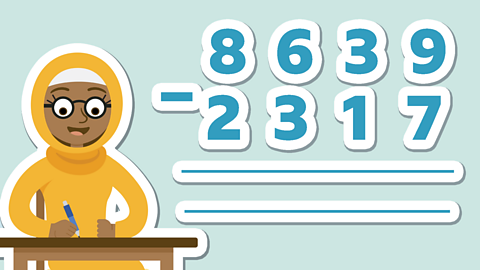
- count1 of 12
